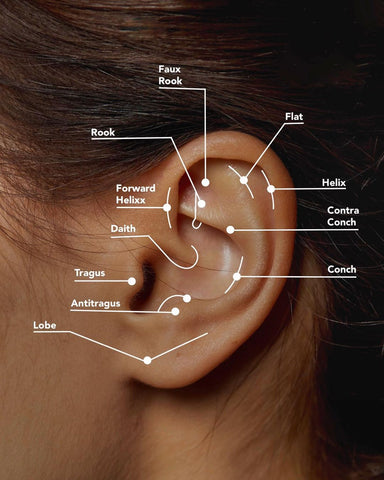If you are considering getting your ears pierced, it's natural to have some concerns about the pain involved. While pain tolerance can vary from person to person, there are certain ear piercings that are generally considered to be less painful than others.
On a pain scale from least to most, here's what you need to know about pain for each piercing site.

One of the least painful ear piercings is the lobe piercing. This is the traditional piercing that most people get when they are young, and it is located in the fleshy part of the earlobe. The lobe is well-padded with fat and has a good blood supply, which helps to minimise pain.
Another relatively low-pain option is the helix piercing, which is located on the upper outer cartilage of the ear. This area has a good supply of blood, which can help to reduce pain and swelling. However, the cartilage is thicker and harder than the lobe, so the piercing may be slightly more uncomfortable.
The conch and tragus piercings is located in the middle of the ear, and it is usually considered to be more painful than the lobe or helix piercings. This is because the conch is made up of cartilage, which is thicker and harder than the lobe. Also in slotting into this category is the forward helix piercing. The pain level can also vary depending on the size of the ear and the placement of the piercing.
High up on the scale are also the daith, rook and antitragus piercings. These are located in ears with thicker cartilage and normally require a curved needle and barbel for piercing.
The most painful ear piercing is generally considered to be the industrial piercing, which involves two piercings that are connected with a barbell. This piercing goes through the cartilage of the ear, which can be quite painful. Additionally, because the industrial piercing involves two separate piercings, the pain may be more intense.
It's important to keep in mind that pain tolerance can vary from person to person, and what may be a relatively low-pain piercing for one person may be more uncomfortable for someone else.
If you are concerned about the pain of ear piercing, it is always a good idea to talk to your piercer about your concerns and to take steps to minimise pain, such as using a numbing cream or taking over-the-counter pain medication before the piercing.

